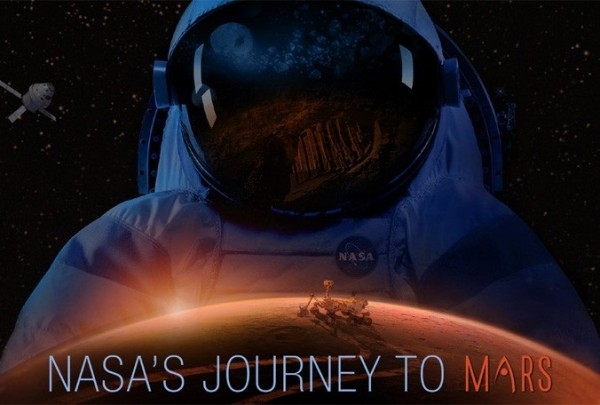Mars Can Cause Brain Damage to Astronauts? Blame it on Cosmic Rays
| Ana Verayo | | May 02, 2015 01:29 AM EDT |
(Photo : NASA) NASA is collecting names to send to Mars via Orion spacecraft in the future. Orion's first test flight is scheduled on December 4, 2014.
Often depicted in sci-fi films, astronauts encounter challenges with space debris, killer asteroids, thruster malfunctions or even a hostile and advanced alien race however, scientists claim that the real danger in outer space for space explorers are apparently, galactic cosmic rays.
Researchers revealed on Friday that exposure to these harmful rays especially during long term can cause cognitive impairments that can even lead to dementia that can occur during the round trips to Mars which can take at least 2 1/2 years in space.
Like Us on Facebook
During a NASA study, mice were exposed to some highly energized particles that are similar to those found in galactic cosmic rays where the creatures experienced decline in cognition and even significant changes in brain nerve cells and structure including synapses where nerve impulses are transmitted.
The origin of these irradiated particles in the galactic cosmic rays are from star explosion residuum more commonly known as supernovae that can penetrate and be absorbed by the human body. Earth is protected from these harmful rays via its magnetosphere.
According to radiation oncology professor Charles Limoli of the University of California, Irvine that these rays are "without a doubt" can also pose danger to humans as it did with mice. He adds that astronauts can incur cognitive impairments leading to performance confusion and an increase in anxiety and psychological trauma in cognitive health.
With this kind of hazard in astronauts' health, this can ultimately compromise space missions since it can debilitate critical activities when unexpected situations occur in deep spaceflight.
During the mice experiments, scientists genetically altered them with green fluorescent neurons to aid in structural analysis and were then exposed to rays under lab conditions at the NASA Space Radiation Laboratory located in the Brookhaven National Laboratory, New York.
Apart from changes in brain neurons and synapses, the mice also manifested decreased performance in learning and memory retention tests where they appeared sluggish and uninterested in the activities presented to them.
Limoli says that astronauts who are bound for the Red Planet cannot fully escape these dangerous rays, where spacecrafts should apply stronger protective shielding against these.
This study is published in the journal, Science Advances.
TagsNASA, brain damage astronauts cosmic rays radiation, Mars, galactic cosmic rays
©2015 Chinatopix All rights reserved. Do not reproduce without permission
EDITOR'S PICKS
-

Did the Trump administration just announce plans for a trade war with ‘hostile’ China and Russia?
-

US Senate passes Taiwan travel bill slammed by China
-

As Yan Sihong’s family grieves, here are other Chinese students who went missing abroad. Some have never been found
-

Beijing blasts Western critics who ‘smear China’ with the term sharp power
-

China Envoy Seeks to Defuse Tensions With U.S. as a Trade War Brews
-

Singapore's Deputy PM Provides Bitcoin Vote of Confidence Amid China's Blanket Bans
-

China warns investors over risks in overseas virtual currency trading
-

Chinese government most trustworthy: survey
-

Kashima Antlers On Course For Back-To-Back Titles
MOST POPULAR
LATEST NEWS
Zhou Yongkang: China's Former Security Chief Sentenced to Life in Prison

China's former Chief of the Ministry of Public Security, Zhou Yongkang, has been given a life sentence after he was found guilty of abusing his office, bribery and deliberately ... Full Article
TRENDING STORY

China Pork Prices Expected to Stabilize As The Supplies Recover

Elephone P9000 Smartphone is now on Sale on Amazon India

There's a Big Chance Cliffhangers Won't Still Be Resolved When Grey's Anatomy Season 13 Returns

Supreme Court Ruled on Samsung vs Apple Dispute for Patent Infringement

Microsoft Surface Pro 5 Rumors and Release Date: What is the Latest?










